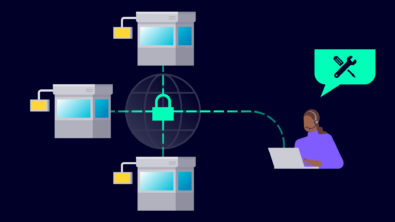An expanded Model Based Definition for NX

The Model Based Definition (MBD) enables completely digital definitions of a product within a 3D model, replacing traditional drawings which would need to be tracked separately. Empowering the model as the single source of truth, product teams save valuable time by incorporating product and process information. This ensures intent is completely captured and associated to the model.
With the most recent update to NX™ Software, the MBD workflow has been greatly improved – NX is part of Xcelerator, the comprehensive and integrated portfolio of software and services from Siemens Digital Industries Software. Instead of requiring the user to input product and manufacturing information (PMI) manually, this can be extracted from the work already done by the designer or engineer automatically. Using a built-in artificial intelligence (AI) in conjunction with predefined rules, full PMI can be captured in a 3D model in as few as three clicks. This saves valuable engineering time by allowing the software to complete the often-tedious job of dimensioning.
The intelligent inclusion of PMI continues with the ability to review PMI notations against company or industry standards, ensuring communicated information is understandable to downstream workflows. That check would be cumbersome if the model had to be fully revised to comply with the company standards, so these changes can easily be made by clicking on the non-compliant features. Should standards change, either for an individual customer’s workflow or a change to industry standards, the logic for PMI review is easily edited.
The complete value of the updates to MBD in NX is not the automatic PMI and review, though the time savings are great. The real value comes in the re-use of this information. There are many avenues for re-use but a few of the most interesting propositions are re-use for algorithmic modeling, convergent modeling, additive manufacturing design and CMM inspection.
Algorithmic modeling – Aside from updates to MBD, rules-based design is a major component of December’s NX release. Instead of manual modeling and complex programming, rules can be implemented to create associative geometries for iso-grid structures, common in aerospace applications for component rigidity. For a deeper dive on how this is improving modeling in NX, check back for an upcoming blog on the benefits of MBD to additive manufacturing.
Convergent modeling – Also an extension of the design space, MBD enables rapid integration of topology optimized components. As these designs are often produced as mesh parts instead of precise CAD geometries, the connection geometries need to be identified from the models. This is also valuable for reverse engineered parts and adaptations of previously designed components as the model is not wholly dependent on existing CAD geometry.
Additive manufacturing design – MBD is extremely important for additive manufacturing (AM). The software handling the designs needs to understand it is a solid body with these dimensions, even though AM parts are often impossible to define with precise CAD geometries.
CMM inspection – Moving into the manufacturing space, MBD is even more useful. Typically, the process for defining an inspection path for geometric dimensioning and tolerancing requires auxiliary geometries and multiple steps to define something as simple as a planar surface. With MBD the surface itself can be selected as the input value, or any other PMI value for that matter. Once the path is created the angles can even be adjusted to ensure part clearance for the probe.
Compared to drawing-centric workflows, NX Model Based Definition reduces the time spent on engineering documentation, drives downstream tools for validation and manufacturing, and reduces late changes and scrap. With one source of dimensional and tolerance information, there’s no need to worry about drawings and models not agreeing with each other. In addition, annotated 3D models are easier to understand than complex drawings, reducing training needs and the chance for errors.
For more information on the new NX update, please read Engineering.com’s coverage or our website.


